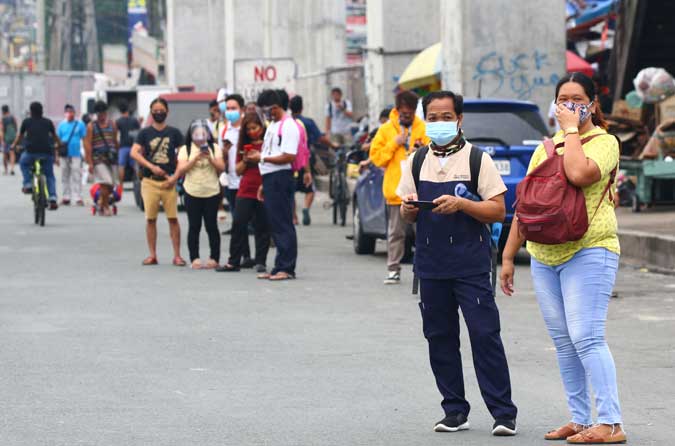A MAJOR HERO of two recent conflicts — in Libya and in Nagorno-Karabakh — isn’t even human. It’s an unmanned aerial vehicle (UAV), or drone, called the Bayraktar TB2 and made by Baykar, a Turkish company in which President Recep Tayyip Erdogan’s son-in-law, Selçuk Bayraktar, serves as the chief technical officer.
In Libya last year, the TB2 scored some successes against a vaunted Russian anti-aircraft system, Pantsir, helping the United Nations-recognized government of Fayez al-Sarraj hold Tripoli against the onslaught of General Khalifa Haftar, who had armed himself with the Pantsirs.
In Nagorno-Karabakh this fall, the same drone was instrumental in unleashing hell on Armenian tanks, artillery, and, again, some Russian-made anti-aircraft equipment. It helped bring about Azerbaijan’s decisive victory and a Moscow-brokered peace deal that returned to Azerbaijan most of the territory it lost in a previous war in the 1990s.
That UAVs can play such a visible part in modern wars is a big part of their appeal. As Ulrike Franke of the European Council on Foreign Relations, whose area of expertise includes drone warfare, pointed out in a Twitter thread, “using drones is like having a film crew with you.” The footage filmed by the unmanned aircraft as they attack is often used by governments for propaganda purposes, and it’s far more convincing than the usual conflicting claims by belligerents; independent observers use it to verify the reports.
An even bigger advantage, however, comes from how Turkey and its allies — the al-Sarraj government and the Azerbaijani regime of President Ilham Aliyev — have used drones to upset the offense-defense balance. Whether or not you subscribe to the theory that wars will be fought when the cost of attacking is much lower than the cost of defending, it is both intuitively clear and experimentally proven that losing a drone, or two or three, is less painful, and carries a lower cost, than losing a tank or a manned aircraft. Sending drones into battle is a lot like playing a computer game — and indeed, gamers may make better UAV operators than trained pilots. In both the Libyan and Karabakh wars, the drone operators apparently took a lot of risks to figure out the opposing side’s vulnerabilities, caring relatively little if they lost a UAV or two along the way.
In addition to the relatively costly TB2s — the price tag is several million dollars apiece, not including control centers — Azerbaijan used pretty much anything that could fly, including old Soviet An-2 agricultural planes refitted into UAVs. It also bought kamikaze drones from Israel.
This use of relatively disposable drones has created an offense-defense balance in real-life wars that is more typical of cyberspace, where the attacker has a distinct cost advantage (though some argue that’s mostly because defenders just aren’t nimble enough). Playing whack-a-mole against drones is a lot like chasing hackers.
The shift toward PlayStation reality isn’t necessarily reshaping hypothetical conflicts between major military powers. Superiority in traditional aircraft can still trump the drone advantage. The defense lobby has an interest in continuing to make and sell expensive manned aircraft, and the US and Russia will continue to buy and upgrade them because of the planes’ range and sheer destructive power. But, as Franke pointed out, “for smaller states, which do have air forces, but only have a limited number of aircraft — as is the case for both Armenia and Azerbaijan — drones are quite an important contribution because they boost aerial capabilities.”
Drones, however, can be a nuisance to major powers — just ask Russia. Anyone can build a drone, as Islamist militants proved in Syria when they sent a swarm of basic UAVs against the Russian base in Hmeimim, Syria, in 2018. The attack was thwarted, but it made clear that less protected targets could be hit in a similar fashion.
The rise of the drone has also created a problem for Russia by sowing doubts about its anti-aircraft systems — one of the country’s biggest defense exports. Armenia bet on these products (although perhaps not the best or most modern ones) and lost. After the Pantsir ran into trouble in Libya, the Russian military’s official weekly Zvezda denied the Pantsir’s humiliating vulnerability to the Turkish drones; yet even as it did so, it allowed that the anti-aircraft system has a “blind zone” that an adversary can learn to penetrate.
The Russian propaganda machine has taken pains to reassure the populace, and the Russian defense industry’s clients, that the country has an answer to the UAV threat. Various websites have spread stories about the use of the Krasukha-4 electronic warfare system to help Armenia avoid a total defeat. The Krasukha, first deployed in Syria in 2015, jams radar and GPS signals as well as other electronic communications. Theoretically, it can render drones helpless. Whether it was really used in the Karabakh war was never officially confirmed; General Movses Hakobyan, a top Armenian military official who resigned after the defeat, said Armenia managed to thwart the Bayraktar TB2 for four days when given the use of a different, newer Russian electronic warfare system, Pole-21, first received by the Russian military last year.
But while Russia has emphasized developing its capacity for such electronic warfare, its effectiveness against tactics pioneered by Turkey and its allies is unclear. Jamming, for instance, could devolve into just another game of whack-a-mole.
Ukrainians, for one, see some potential in using drones against Russia-backed forces. Last year, Ukraine signed a $69-million deal with Baykar to buy six TB2s, control equipment, and ammunition. Ukraine is now reportedly working with the Turkish company to launch local production. The example of Azerbaijan’s successful attack on Karabakh is inspiring to Ukrainian leaders, who haven’t given up on reclaiming the country’s east, now controlled by pro-Russian separatists.
Russia, however, isn’t the only major military power that should worry about the proliferation of drones. Any country or military bloc that conducts overseas operations and gets involved in local conflicts will likely have to deal with the growing threat. According to a study by Michael Horowitz of the University of Pennsylvania and his collaborators, of the 22 countries that possess armed drones now, 19 have acquired them since 2010, and 14 since 2014, most of them thanks to the “supply shock” of China’s 2011 entry into the market. More than 20 other countries are pursuing the capability, Horowitz found. It is, among other things, a pursuit of status: Drones are synonymous with technological innovation.
Intervention in the deadly computer games of tomorrow could be fraught with embarrassment, or worse, for the big players. And, if the offense-defense balance theory is correct, such interventions will be called for more frequently: Going on the attack is no longer as scary or as expensive as it used to be.
BLOOMBERG OPINION
 Gov’t gears up for influx of returning overseas workers
Gov’t gears up for influx of returning overseas workers 

